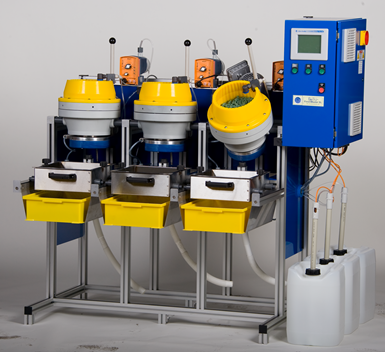Centrifugal Disc Finishers Designed to Eliminate 80% of Handwork
In order to help manufacturers increase throughput, decrease cost and the increase quality of metal parts, Bel Air Finishing has developed centrifugal disc finishers.

In order to help manufacturers increase throughput, decrease cost and the increase quality of metal parts, Bel Air Finishing has developed centrifugal disc finishers. These machines are designed to polish and deburr a wide range of materials including brass, copper, steel, stainless steel, aluminum, kovar, titanium and more. The machines eliminate 80% of handwork and producing over five times the output of normal hand deburring operations. They have also been able to drastically reduce surface RA in metal parts across aerospace, automotive, medical and other industries.
The centrifugal disc finisher comes in sizes ranging from 4 to 60 liters and most models come with a mobile frame, ideal for cellular and JIT production. A wide variety of additional features are also available including integrated ultrasonic cleaners, on board media storage, a direct compound feed system and parts separation options.
The machines work by using a bowl-shaped finishing chamber, comprised of both a fixed upper bowl and spinning bottom disc. The rotation of the disc rotates both the media and parts within the chamber, forcing the mass to the stationary outside wall. Then this mass of part(s) and media folds back to the center. This process is repeated creating a three-dimensional, toroidal action similar to a vibratory bowl finisher. The disc finishers have a north/south gap, enabling adjustment of the gap system to extend machine service life.
Related Content
-
Laser Welding Versus Micro Welding
The latest battle in finely detailed restoration/repair of mold materials.
-
Questions and Considerations Before Sending Your Mold Out for Service
Communication is essential for proper polishing, hot runner manifold cleaning, mold repair, laser engraving and laser welding services.
-
Breaking Down 3D Scanning in Moldmaking
Identifying 3D scanning requirements and implementing the appropriate technology.











